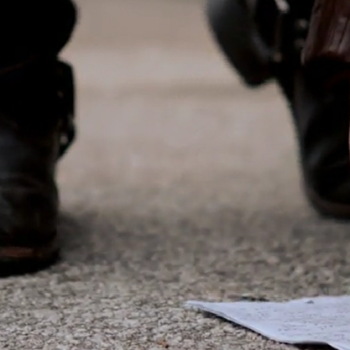Have you ever wondered about the secret life of your trash after you toss it into the dumpster, or after it has disappeared from your curb? How about the lives of the people who pick it up? How about what would happen if suddenly all trash collection stopped?
The idea of a semi-invisible world undergirding the modern city has long captured the human imagination. Look to the many books, TV shows, and movies about street urchins, sewer-dwellers, and the criminal underground, or the many plot devices centering on the hidden wealth of information in the homeless community.
But what about the legitimate, government-funded shadow cities that allow the cities we know to exist? What about sanitation work–its armies, its garbage fields, and its machines in the war against ever-accumulating trash shoved out of sight, even stigmatized, while the work of the fire department or police department is glorified? Children may clamor in the morning for a glimpse of the garbage man and his colossal truck, but their parents would prefer they not become sanitation workers. And you won’t find adults tuning in to dramatizations about garbage men on HBO that night.
Sanitation workers, it turns out, have twice the fatality rates of police officers, and nearly seven times the fatality rates of firefighters.
Maybe HBO should risk a pilot, though. In Picking Up: On the Streets and Behind the Trucks with the Sanitation Workers of New York City, New York University anthropologist Robin Nagle lets the uninitiated in on the vital, hidden, and arcane system that enables cities to function–from the logistics to the slang and jokes to the places most of us never see. To study the mini-society known as New York’s Department of Sanitation, not only did she follow the men in the garbage truck around through their day–something that took years of trust-winning on its own–she also trained and sat for exams to become a sanitation worker herself
Sanitation workers, it turns out, have twice the fatality rates of police officers, and nearly seven times the fatality rates of firefighters. And their work has similarly life-or-death consequences in the long term, as Nagle shows by taking a look back at New York City’s history. “A study done in 1851,” Nagle writes, “concluded that fully a third of the city’s deaths that year could have been prevented if basic sanitary measures had been in place.”
The reader comes away with a greater appreciation for trash, the necessary byproduct of our consumer society we spend a great deal of money not to think about. But perhaps more importantly, the reader comes away with a greater admiration and appreciation of the men and women that make their way through Nagle’s pages: the beloved younger garbage man who dies on the job, the prankster who destroys one of the hated public trash bins, the suspicious lunchroom clan, the teacher of new trainees who acquires cult-like status.
. These city workers have twice the fatality rate of police officers and seven times that of firemen. From a review of the book, with an interview of the author, by Heather Horn in the Atlantic:












